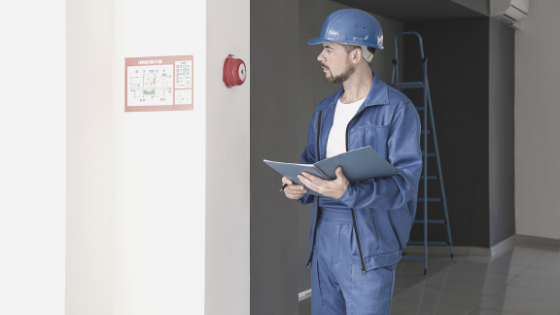
Fire Safety: Is Your Building Safe?
With the arrival of Autumn, and Winter on the way, the use of heaters and other electrical items to warm homes increases, heightening the risk of building fires.
Fire regulations in New South Wales have changed recently, so now is the ideal time to ensure you’re familiar and up to date with the requirements for your building.
Accredited Practitioners
Since 2017, the New South Wales Government has introduced reforms through the Environmental Planning Assessment Regulation 2000 (the Regulation) to enhance fire safety standards for new and existing buildings.
New legislation passed in July 2020 stipulates that ‘accredited practitioners (fire safety) – formally referred to as ‘competent fire safety practitioners – are responsible for assessing a building’s fire safety standards, amongst other important changes.
According to the NSW Department of Planning, Industry and Environment, “an accredited practitioner (fire safety) is a person that undertakes certain specialist fire safety assessment functions required by the Regulation.”
The Fire Protection Accreditation Scheme (FPAS), approved in July 2020 and overseen by Australia’s peak body for fire protection (FPA Australia), is the first industry accreditation scheme to receive NSW Government approval.
Under this mandatory scheme, it’s stipulated that only FPAA-accredited practitioners (fire safety) perform the functions covered by the FPAA scheme, including:
- Fire Systems Design
- Fire Systems Certification
- Inspect and Test (routine service)
- Fire Safety Assessment
These individuals are also responsible for issuing Fire Safety Certificates for new buildings and Fire Safety Statements for existing buildings.
There are two types of Fire Safety Statements:
- An Annual Fire Safety Statement must be issued each year and include all the essential fire safety measures that apply to a building, including exit systems.
- A Supplementary Fire Safety Statement is issued at more regular intervals for any critical fire safety measures that apply to a building.
To assist you in selecting a suitably qualified FPAA-accredited practitioner (fire safety), the NSW Government has guides for Building Owners and Building Certifiers. For more information, click here.
Smoke Alarms
Installation and maintenance of smoke alarms is a vital part of fire safety. It’s critical all alarms are checked annually to ensure they’re functioning correctly in the event of a fire.
The Environmental Planning and Assessment Act 1979 and Environmental Planning and Assessment Regulation 2000 (Planning Laws) impose maintenance obligations on both owners’ corporations and lot owners, depending on the location of smoke alarm systems.
In simplified terms:
- A smoke alarm located in common property areas of a building is considered common property and maintained by the owners’ corporation.
- A smoke alarm located within a lot, which was installed by the owners’ corporation or developer, or wired to the building fire safety board, is considered common property and maintained by the owners’ corporation.
- A smoke alarm located within a lot, which was installed by the lot owner or a previous lot owner, and is not wired to the building fire safety board is considered lot property and maintained by the lot owner.
Smoke Alarm Maintenance
Generally speaking, smoke alarms represent essential fire safety measures, requiring annual inspection and certification as part of the issuance of an Annual Fire Safety Statement by an accredited practitioner (fire safety) referenced above.
Smoke alarms must be replaced within the period specified by the manufacturer. Most smoke alarms require replacement within 10 years of the date of manufacture.
Batteries must be replaced within the period specified by the manufacturer. This is typically every 12 months, with the exception of lithium batteries that may last longer.


